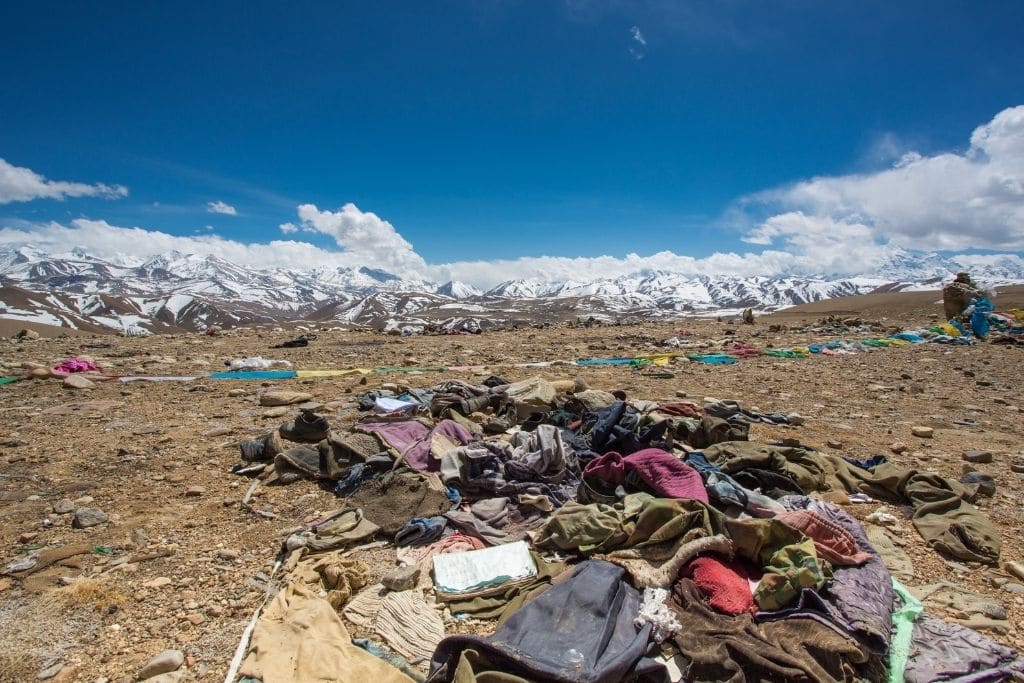‘Fast Fashion’ is a term used to define a highly profitable and exploitative business model that is “based on copying and replicating high end fashion designs”. The clothes are mass-produced, with workers often working in inhumane conditions, and are purposefully designed to be frail with a limited lifespan as designs change quickly and are cheap to produce. They are also consumed at a higher rate and so the expectations for the clothes’ lifespan decrease, leading to multiple ethical and sustainable issues. Fast fashion pollution creates not only long-term and potentially irreversible environmental damage, but exacerbate the effects of climate change.
—
Fast fashion is fast in more ways than one. The rise of fast fashion is intertwined with the rise of social media and influencer culture. Consumer demand and tastes have become insatiable and ever-changing, leading to fast fashion companies rushing to reproduce items whenever an influencer posts a photo wearing a new outfit. However, they are not simply reacting to consumer demand but are also creating it. The clothes produced by these companies are purposefully not made to last; a strategy known as planned obsolescence. Due to fast changing trends, producers respond by manufacturing clothes more and more rapidly, which means that designs are not well stress-tested and cheap synthetic fabrics are used to keep costs low. With its reliance on unsustainable plastic fabrics, the industry’s enormous water usage, and the unethical treatment of its workers, the rise of fast fashion has had devastating consequences on the world.
You might also like: Fast Fashion and Its Environmental Impact
Fast Fashion and Climate Change
Fashion and its supply chain is the third largest polluting industry, after food and construction. It emitted 10% of global greenhouse gas emissions, releasing 1.2 billion tonnes of carbon dioxide per year, more than the shipping and the aviation industry combined. If it continues at the same pace, the industry’s greenhouse gas emissions are predicted to increase by more than 50% by the year 2030. These emissions come from the processes along the industry’s supply chain, from the raw materials to production and processing to transport and shipping.
Fast Fashion Pollution
Due to how affordable fast fashion clothing is and how quickly trends come and go, the substantial increase in clothing consumption has led to a substantial increase in textile production. Global per capita production of textile increased from 5.9kg per year to 13kg per year from 1975 to 2018. Global consumption of apparel has risen to an approximate 62 million tonnes per year and is projected to further reach 102 million tonnes by the year 2030. As a result, fast fashion brands are producing twice the amount of clothes today than in the year 2000. This dramatic increase in production has also caused an increase in both pre- and post-production textile waste. Due to the number of cut outs for the clothing, a large number of materials get wasted as they cannot be used any further, with one study predicting that 15% of fabric used in garment manufacturing is wasted. Post-production, 60% of approximately 150 million garments produced globally in 2012 were discarded just a few years after production. Despite such high rates of textile waste, textile recycling remains too low, with 57% of all discarded clothing ending up in landfills, which poses multiple public health and environmental dangers as toxic substances including methane, a greenhouse gas that is at least 28 times more potent than carbon dioxide, are released when landfills are burned.
You might also like: 10 Concerning Fast Fashion Waste Statistics
Fibre production – which uses multiple pesticides, herbicides, and much more which can leach into the soil and reduce fertility, biodiversity, and cause much more harm to the natural environment – and textile manufacturing – which uses chemicals during spinning, weaving, and other processes – bring about toxic substances are a cause for concern even before the garment even has a chance to be sold. Not only does this fast fashion pollution lead to high environmental negative impacts from the chemicals, but it also creates an unsafe environment and increases risk of health issues for factory workers, cotton farmers, and even the consumers. Furthermore, the synthetic materials that are used are the primary reason for microplastics entering the oceans, usually through the water used in washing machines, accounting for 35% of all microplastics. To lower the price and produce clothing items for cheap, polyester is a popular material choice, which consists of plastic and releases a larger amount of carbon emissions than cotton. Not only is plastic slow to degrade in the ocean, it also creates a toxic substance when it degrades, which is harmful for marine life and marine ecosystems. These microplastics also end up in the human food chain, causing negative health effects.
The fashion industry also uses large quantities of water; in fact, consuming one tenth of all the water used industrially to clean products and run factories, totalling 79 billion cubic metres in 2015. Currently, 44 trillion litres of water is used annually for irrigation, 95% of which is used for cotton production. It was estimated that 20% of water loss suffered by the Aral Sea was caused due to cotton demand and consumption in the EU. Furthermore, the textiles and fashion industry has caused a 7% decrease in local groundwater and drinking water globally, and especially in water stressed manufacturing countries such as India and China.
Developing countries bear the burden of these environmental impacts from fast fashion pollution, while most of the consumption is done in the developed countries. Textile production occurs largely in developing countries due to cheap manufacturing and labour costs, and lax environmental regulations as compared to the developed countries. At the end of the cycle, the waste would be shipped back. However, this practice has reduced due to many countries banning the import of waste, including textile waste.
It is essential for the textile and fashion industry to mitigate its environmental impacts caused by excessive water usage, release of toxins into the environment, and large amounts of waste generated. On an individual level, consumers can help by reducing their consumption of fast fashion, as it is more important for this industry to ultimately completely abandon the fast fashion business model, which, at its core, promotes overproduction and overconsumption, consequently also leading to high amounts of material waste.
This story is funded by readers like you
Our non-profit newsroom provides climate coverage free of charge and advertising. Your one-off or monthly donations play a crucial role in supporting our operations, expanding our reach, and maintaining our editorial independence.
About EO | Mission Statement | Impact & Reach | Write for us


















